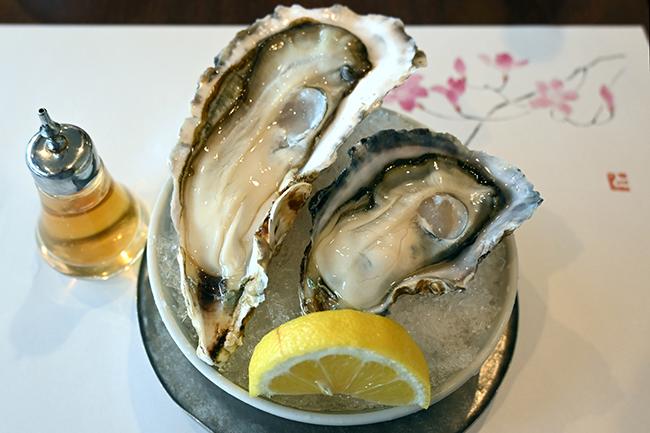Competition is fierce among the prefecture’s about 1,700 okonomiyaki restaurants. The best seats are at the counter, where the chefs create the treats on a griddle in front of you.
JAPAN (THE WASHINGTON POST) – Hiroshima draws scores of visitors from around the world, and delights them with its local delicacies, particularly its okonomiyaki pancakes and fresh oysters.
Okonomiyaki is made by layering Chinese noodles, meat, cabbage, bean sprouts and other ingredients on top of a thin layer of batter that cooks into a crepe-like pancake. A favourite Hiroshima variation is called nikutama soba – okonomiyaki with meat, noodles and egg. Locals order it without even looking at the menu. In many places, you can also choose udon noodles instead of Chinese noodles.
Walking around the city of Hiroshima, you see okonomiyaki restaurants everywhere. Competition is fierce, which pushes up the quality of each establishment. It is said that there are about 1,700 okonomiyaki restaurants in Hiroshima Prefecture, making for the highest number of okonomiyaki restaurants per capita in Japan. There are even “okonomiyaki buildings” in the city, where many okonomiyaki restaurants are housed under the same roof. The best seats are at the counter, where the okonomiyaki is cooked on the griddle right in front of you. The staff’s dynamic and skilled cooking makes for a nice pre-meal show.


Hiroshima oysters are also a must-try on any trip to the city. With their rich, fresh and elegant tidal aroma, these oysters have a long history of cultivation and account for approximately 60 per cent of the nation’s production. There are strict safety standards, which help to maintain the oysters’ high quality.
Located at the foot of a bridge near the Atomic Bomb Dome in the city’s Peace Memorial Park is Kakifune Kanawa, a restaurant that re-creates a bygone era when oyster dishes were served on boats fitted out for diners. (Kakifune means “oyster boat.”) The oysters here are cultivated in the clean waters off Okurokamishima, an uninhabited island off Hiroshima Port, and are renowned for their superior flavor.
A few drops of Bowmore and a drizzle of squeezed lemon nicely accented the oysters’ mellowness. The course included grilled oysters, fried oysters and oyster rice, all delectable and beautifully presented.

At night in Hiroshima, you have your pick of bars. But if you fancy sipping drinks in a tatami-matted room inside a traditional-style Japanese house, you might want to step inside Hirahira (4-12 Komachi, Naka Ward, Hiroshima City). A roughly 10-minute walk from Peace Memorial Park, the bar is run by Yumiko Kawahara, the owner, and her husband Masaru Suzuki. It opened nine years ago after renovating the house where Kawahara’s grandmother lived following the war.
Once you’ve taken off your shoes at the entrance, you will find a tatami-mat room with furniture and a piano that were actually used when the house was lived in, immersing you in a retro ambiance. Kawahara is a musician who used to perform in Tokyo. Now, she sometimes holds live shows at the bar.






